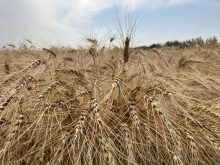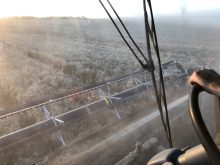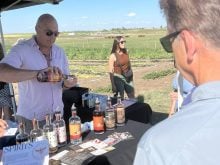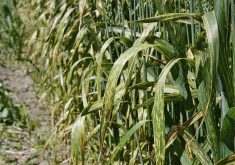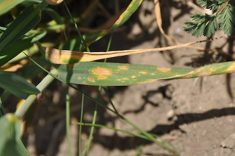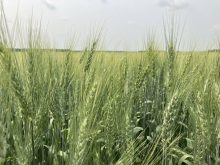Your social media pictures and tweets can actually have an impact on the international grain trade.
This was one of the many things Alberta Wheat chair Gary Stanford learned on a two-week New Crop Mission to Central and South America last month.
“South American countries are very happy with Canadian wheat, because they have learned that it is very good quality and has consistent quantity,” said the Magrath-area farmer. “They plan on expanding and importing more Canadian wheat, not getting away from it.”
The annual New Crop Missions see teams of industry reps (from Cereals Canada, the Canadian Grain Commission, and Cigi) visit customers around the globe to give a comprehensive overview of the new wheat and durum crop. But farmers who accompany the officials are a key part of the tours.
Read Also

Grazing ‘sweet spot’ boosts pasture performance
Timing-focused approach to pasture management touted to boost forage growth, livestock gains while also cutting farmer labour and inputs
In each city, Stanford was the first speaker, spending half an hour talking about — and showing pictures of — his farm, how he seeds his crop, and the decisions he makes in regards to fertilizer and crop protection products.
“I got a lot of questions on how I made my decisions, how I know what crops to grow, sustainability and fertility, and when I seeded my crop, and when I harvested, stuff like that,” he said.
Mexico (the first stop on his tour) buys a couple million tonnes of wheat from Canada each year — soft winter from Ontario for crackers and cookies, and hard spring from Western Canada for breads, pastries and cakes. Ecuador, the next stop, buys about a million tonnes annually of Canadian Prairie Spring wheat for flatbreads, noodles, and small hard loaves of bread.
“It also buys a lot of hard red spring wheat because it wants the high-rising breads like we have,” said Stanford.

Social media
The audience in Guayaquil (Ecuador’s main port and largest city) was up to date on this year’s harvest, asking how the early snow affected crops.
“Everywhere we went, we got asked about falling number,” said Stanford. “Falling number is a big concern for them with our wheat this year. They’ve heard about falling number issues.”
The delegation had to explain that not all wheat is having problems with falling number (a proxy for enzyme levels that impair baking quality).
“It was good to go there and alleviate fears of what they hear on social media,” he said, adding he was surprised to learn grain buyers get a lot of information from social media.
Stanford is a prolific user of Twitter — sending out more than 10,000 tweets since getting his account seven years ago — but said it was a bit disconcerting to realize grain buyers are monitoring Prairie farmers on social media.
“When people put bad things on Twitter or social media, it’s not good for other countries that are looking to learn more about where they are getting their grain from,” he said. “My message for Canadian farmers is to be more conscientious about what you put on your social media platform. The countries that buy our products are watching what we say on social media about certain herbicides or pesticides.
“Be careful what you say on there. People see things on social media; it can affect the way other countries view what you’re doing.”
Rail strike
Canada’s railway strike was also a major concern for buyers.
At the next stop — Bogota, Colombia — the Canadians were quizzed on when it would be over and when they could dispatch a freighter to Canada to get more grain.
“They were pretty upset about that and wanted to know how we were going to get the railways going,” Stanford said.
At each stop, the team relied on Canadian embassies, not just for advice on local customs but also on which routes they should take to their meetings.
“It seems like there were demonstrations going on in every city we went to,” said Stanford.
Next up was Lima, Peru, where once again a team of interpreters (hired well in advance so they could get a handle on grain industry lingo) were waiting.
“A lot of people in the grain-buying industry can speak fairly good English,” said Stanford. “The bakers and millers who wanted to learn about the quality of grain, they were the ones who needed interpreters.”
For his part, Stanford learned about how the middle class is growing in many Central and South American countries.
“It was quite interesting that in Mexico and Colombia, they were trying to figure out how to get the younger adults away from eating so much rice and more towards bread,” he said.
The group was able to tell them about the Alberta Wheat’s ‘Life’s Simple Ingredient’ website (www.lifessimpleingredient.com), which offers facts and recipes. The South Americans were inspired and thought it was something they could emulate.
“There’s a lot of positive things that can come out of these trade missions,” said Stanford. “We can work with them and learn from them.”




